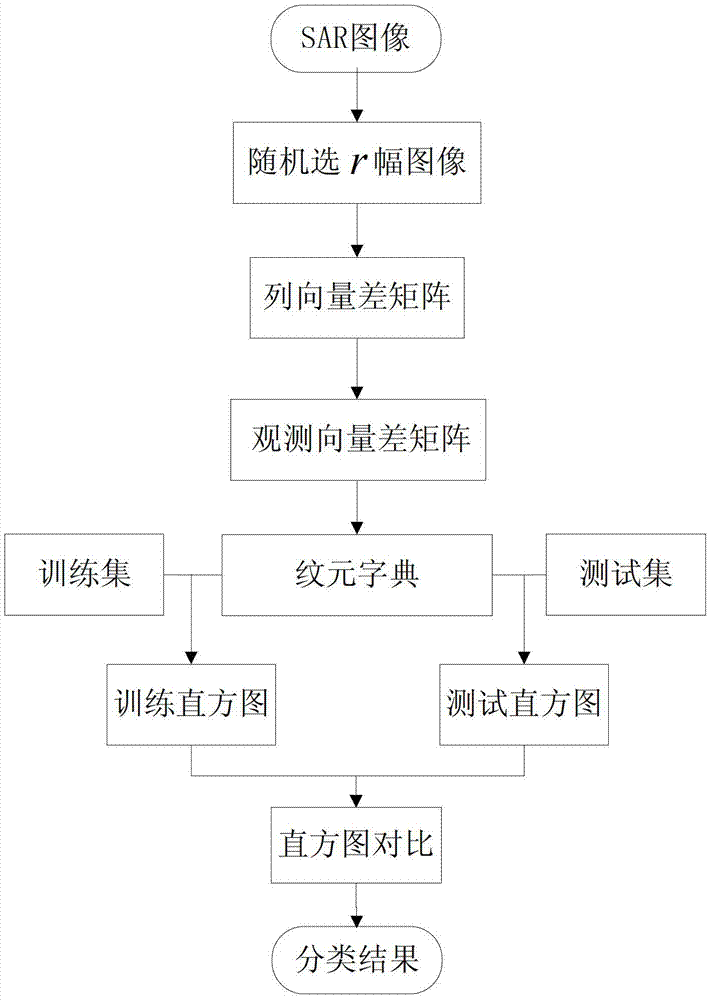Observation vector difference based method for classifying synthetic aperture radar (SAR) image textures
A technology for observing vectors and image textures, applied in the field of image processing, to achieve the effect of simple classification process, high classification recognition rate, and reduced calculation amount
- Summary
- Abstract
- Description
- Claims
- Application Information
AI Technical Summary
Problems solved by technology
Method used
Image
Examples
Embodiment Construction
[0039] refer to figure 1 , the specific implementation steps of the present invention are as follows:
[0040] Step 1. Randomly select r images from each type of texture image in the training set, 8p ;
[0041] Step 2. Convert the block image I p Each column vector in is connected end to end, pulled into a column vector p, and subtracting two adjacent column vectors to obtain the column vector difference, denoted as p diff , use the column vector differences of all block images obtained in step 1 to form a column vector difference matrix P diff ;
[0042] Step 3. For column vector difference matrix P diff Calculate by the following formula to obtain the observation vector difference matrix X of the texel,
[0043] X = MP diff ,
[0044] Among them, M is the observation matrix;
[0045] Step 4. Use the K-means clustering algorithm to cluster the vectors in the observed vector difference matrix X of the texel, and the number of clusters is K c , 5c Among them, C is the n...
PUM
 Login to View More
Login to View More Abstract
Description
Claims
Application Information
 Login to View More
Login to View More - Generate Ideas
- Intellectual Property
- Life Sciences
- Materials
- Tech Scout
- Unparalleled Data Quality
- Higher Quality Content
- 60% Fewer Hallucinations
Browse by: Latest US Patents, China's latest patents, Technical Efficacy Thesaurus, Application Domain, Technology Topic, Popular Technical Reports.
© 2025 PatSnap. All rights reserved.Legal|Privacy policy|Modern Slavery Act Transparency Statement|Sitemap|About US| Contact US: help@patsnap.com



